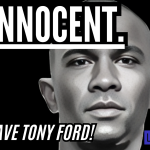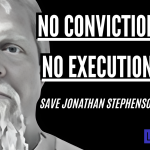From April 8, 2014, “Lawful evil, chaotic good, and BADD theology“:
The astonishing thing, as Newitz says, is that today, a few decades later, “D&D-influenced stories” are a noncontroversial part of mainstream American pop culture. That’s not what anyone would have predicted back during the Reagan years, when Satanic baby-killer politics first arose, bringing with it a whole host of demonizing delusions — a diabolical conspiracy of black-robed ritual abusers, fears of backward-masking messages in rock music, the presumption of a suicide epidemic among RPG enthusiasts. If you remember the 1980s, it’s jarring to step back today and realize how much of that has simply faded away and lost its power. The same folks who were able to bully D&D to the sidelines in the 1980s found themselves steamrolled when they later tried the same tactics against Harry Potter and his fans.
Think of that moment when President George W. Bush joked with Ozzy Osbourne at the White House Correspondents Dinner. When Bush’s father was president, Ozzy was a favorite bogeyman of the moral panic — a stock character inserted into some of the most outrageous urban legends spread by the ascendent anti-Satanists of the righteous right. A few years later and Ozzy had become a beloved celebrity, embraced even by the conservative establishment as a quirky, harmless sit-com dad figure.
The politics of righteous opposition to Satanic baby-killers still dominates, but much of what initially fueled its fire now seems hopelessly weird and, as Newitz says, “shabby.” She links to this once-influential pamphlet from the notoriously dishonest anti-fun group B.A.D.D. (Bothered About Dungeons & Dragons), noting how today it seems as dated as an artifact from the Salem witch trials.
James McGrath highlights a terrific comment to Newitz’s post, in which shadowling repurposes a classic joke from John Rogers: “It was never a fair fight between fundamentalist Christianity and D&D. One was a dangerous system full of dark mysticism and threats to warp a young mind beyond repair, and the other was a tabletop RPG.”
Back in the 1980s I was part of both of those worlds. I was a young fundamentalist Christian and a big fan of tabletop RPGs. The anti-Dungeons & Dragons hysteria meant that it was easier for us to play other games — like the cheaper imitation, “Tunnels & Trolls,” and then, later, Middle-Earth Role Playing. (That last one was set in J.R.R. Tolkien’s fictional world, which made it easier to defend in our evangelical subculture because it was like having C.S. Lewis in our corner.)
The moral panic of the anti-D&D crusaders was sheer nonsense, but those fundie moral crusaders weren’t wrong to fear the threat that such games posed to their ideology. Fundamentalist ideology is a fragile thing, after all, so almost anything other than itself is correctly viewed as a subversive threat.
But while the anti-RPG forces were preoccupied with the supposed “Satanic” dark sorceries they claimed were involved in the game, they overlooked one way in which D&D actually was a subversive threat to the white evangelical ideology I was raised in.
That threat had nothing to do with monsters or magic. It had to do with “alignment” — the short-hand system for categorizing the moral outlook of the character you were playing.
















